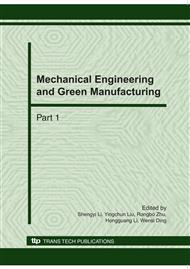p.355
p.360
p.365
p.371
p.376
p.383
p.387
p.393
p.399
Numerical Investigation on Aerodynamic Performance for Guiding VAWT with Combined Blades
Abstract:
In this paper, the reason was analyzed that the aerodynamic efficiency of the traditional vertical axis wind turbine (VAWT) was always low, and a new type of VAWT—Guiding VAWT was introduced. On that basis, a new blade shape called as combined blade for Guiding VAWT was proposed and numerical investigation was complemented on its aerodynamic performance by CFD (Computational Fluid Dynamics) technique. This Guiding VAWT includes two components: guiding impeller and rotating impeller, which are both combined blade in shape. The guiding blade is combined by three sections: inlet radial section, middle arc section and outlet linear section. The wind blade is combined by two sections, inlet arc section and outlet linear section. The combined guiding blade may not only avoid the wind impeller from the direct impact by the coming flow on its convex surface of the blade so as to decrease the drag torque but also improve the effective impact by the coming flow on the concave surface of the blade, both of which contribute the enhancement for the driving torque of the wind turbine. Results indicate: This new type of Guiding VAWT with combined blade has a wider operating range, higher aerodynamic efficiency than the traditional VAWTs. And more, this paper introduced the airfoil blade into this new type of VAWT and numerically validated that even though the flow inside VAWT was a large separated flow with variable attack angles, the aerodynamic advantage of the airfoil blade could still be shown to some extent, which hoped to further enhance the aerodynamic efficiency of the VAWT. Additionally, this new type of VAWT has a two dimensional structure for convenient manufacture, which has the latent energy to be popularized.
Info:
Periodical:
Pages:
376-382
Citation:
Online since:
October 2010
Authors:
Price:
Сopyright:
© 2010 Trans Tech Publications Ltd. All Rights Reserved
Share:
Citation:


